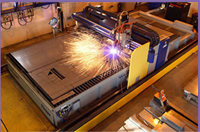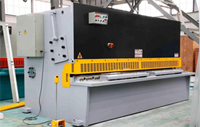- Category: RESEARCH
- Written by Mohd Afif Md Jamel Khir
Productivity and Optimization of the machining mode of cutting tools
Metal shelving units are an economical substitute if you need storage space. The fact that they are built from metal and are far more flexible than wooden shelving is undeniably useful. The other substitute to metal is plastic shelving units, which is incomparably at a reduced cost than metal. However, compared to metal shelving units, these plastic units cannot carry so much weight.
 Plastic units are not suited for rough handling which is crucial for all storage equipment to bear. Durability and impact resistance are the two most important things that we would not have to bother with metal units, causing industries and researchers to feel obliged to find an accurate calculation to increase the productivity rate during the metal cutting processes to optimize productivity.
Plastic units are not suited for rough handling which is crucial for all storage equipment to bear. Durability and impact resistance are the two most important things that we would not have to bother with metal units, causing industries and researchers to feel obliged to find an accurate calculation to increase the productivity rate during the metal cutting processes to optimize productivity.
Due to the increasing demands, researchers from UniMAP have taken initiative to find out the precise calculation to increase the productivity rate of the metal cutting machine. It is known that the strength of the machine operating modes reflects on the intensive wear of machine tool cutters to increase the dynamic forces, speed of the cutting process, and magnitudes of feed rates and the depth of cut.
 The most unreliable elements, and yet one of the most important in a machining tools is the metal cutter itself. Comparing it to other components of machining tools such as spindles, bearings and sliders they are many times more reliable than metal cutters.
The most unreliable elements, and yet one of the most important in a machining tools is the metal cutter itself. Comparing it to other components of machining tools such as spindles, bearings and sliders they are many times more reliable than metal cutters.
As a result, machine tools have to go through many cutters or blade replacement processes that ultimately affecting productivity and cost. However, the manufacturing industries are left clueless in between the processes as they are not able to estimates precisely the productivity rates due to the absence of the specific mathematical dependency.
However, researchers A.M. Ahmed Alwaise, R. Usubamatov and Z.M. Zain managed to come up with a mathematical equation to determine the productivity rate of an automatic machine tool on the change of processing mode.
The equation considers all the major aspects in calculating the productivity rate such as the total machine working time as in when it produces products as well as the time losses due to the failures of cutters, replacement, repairing and tuning.
The proposed equation of the productivity rate for automatic machine tool is a function of cutting speed and parameters of tool life, which enables calculations at the pre-stage of preparing economically effective manufacturing processes for products.
This finding enables industries to find the optimal processing mode that can give the maximum productivity rate of a machine tool.
